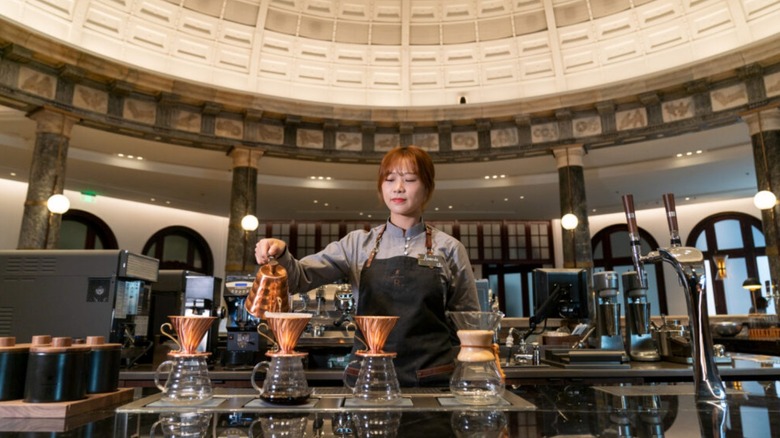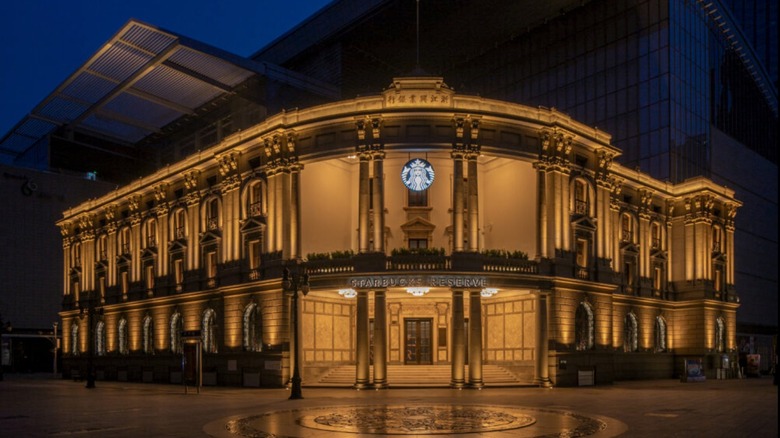Why One China Starbucks Location Has A Renaissance Design
Bring up Chinese architecture, and chances are good that most of us will think about ornate pagodas and golden roofs decorated with bright red paper lanterns. But one Starbucks location in the northern Chinese coastal city of Tianjin is as far from the stereotypical image of a traditional structure as it gets, even though it was designed by a pioneering Chinese architect, Shen Liyuan, during the early part of the 20th century.
Shen was born in China, but left his province of Zhejiang in 1909 to study in Italy. When he returned home, he was hired to design buildings, one of which was completed in 1921 in a Renaissance style reminiscent of ancient Greece and Rome. That building became known as the Zhejiang Xinye Bank, and it carried that designation until the 1950s. While the space was transformed into a tailoring shop and then a foreign trade mall during the early days of China's economic boom in the 1980s, the building became vacant not long after the city decided to name it a heritage site in 1997. From that point, it sat empty for 20 years until Starbucks took it on.
How Starbucks worked to maintain the integrity of the historic site
The space once known as the Zhejiang Xinye Bank is now called Riverside 66, and it houses a Starbucks Reserve coffee bar as well as Tianjin's first Starbucks Bar Mixato and Starbucks Teavana bar. Yet this is no ordinary Starbucks. It might normally take up to seven weeks to build a new store from start to finish, but because this is a designated heritage site, it took three years along with the help of local historic preservation experts in order to get the job done. And what a job they did.
Starbucks built its coffee palace around Riverside 66's magnificent interior, which means guests today get to see a Greek-style facade on the outside, and the marble columns and carvings located inside. Customers also get to enjoy the bank's original century-old counters. In order to modernize the space, Starbucks made use of design features like bronze tubes to create lighting fixtures, and the glass dome where the store's air conditioning unit was installed. Tianjin Academy of Social Sciences historian Luo Shuwei praised the work, saying the chain's partners had "shown great passion and dedication to ensure that every design detail is in harmony with the original architectural style, to create a warm and welcoming ambience that is also filled with history," per Starbucks. Because of this work, Starbucks China achieved gold status at the 2020 Hong Kong Design Awards for the International Retail – Shopping & Food interior design category.

